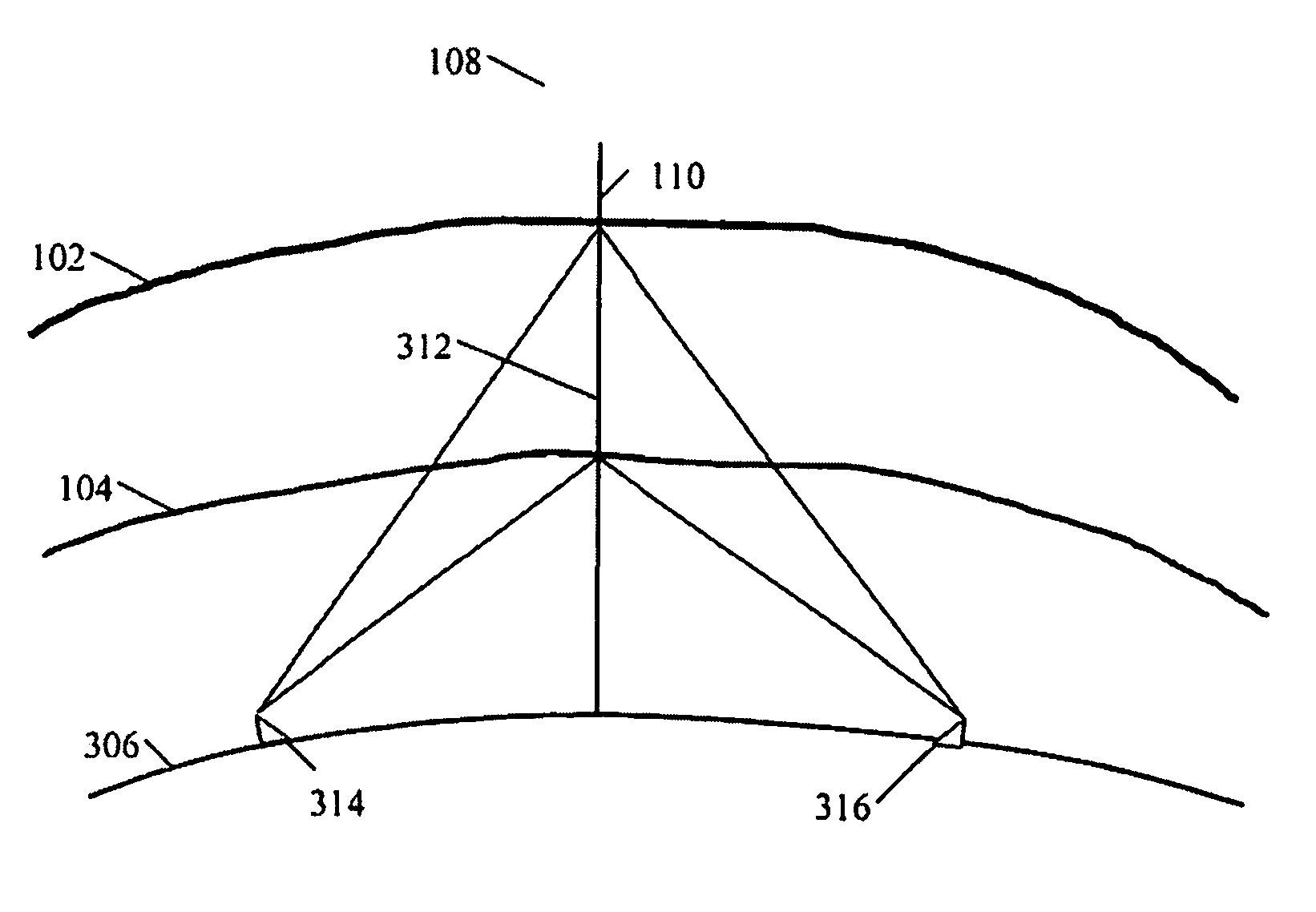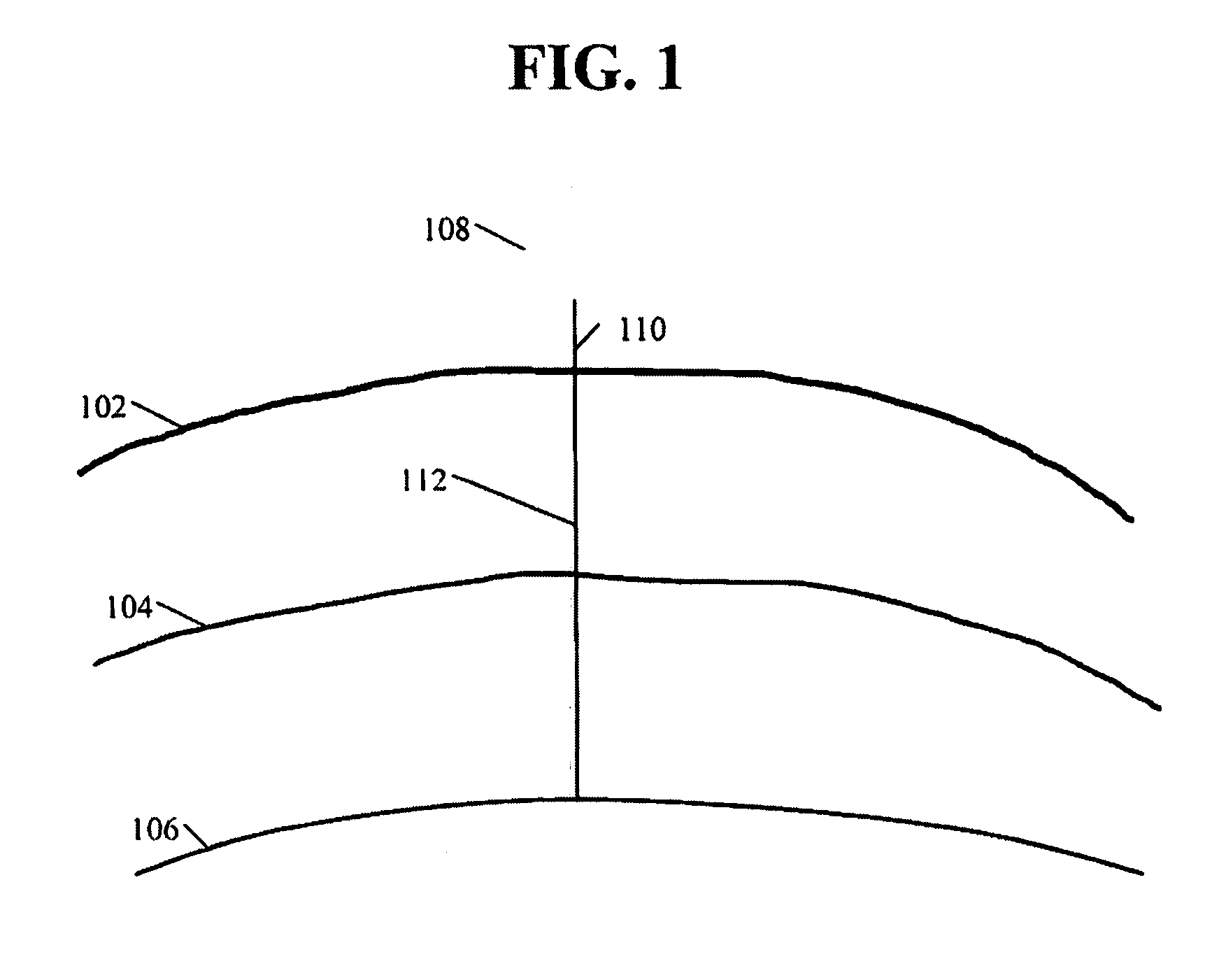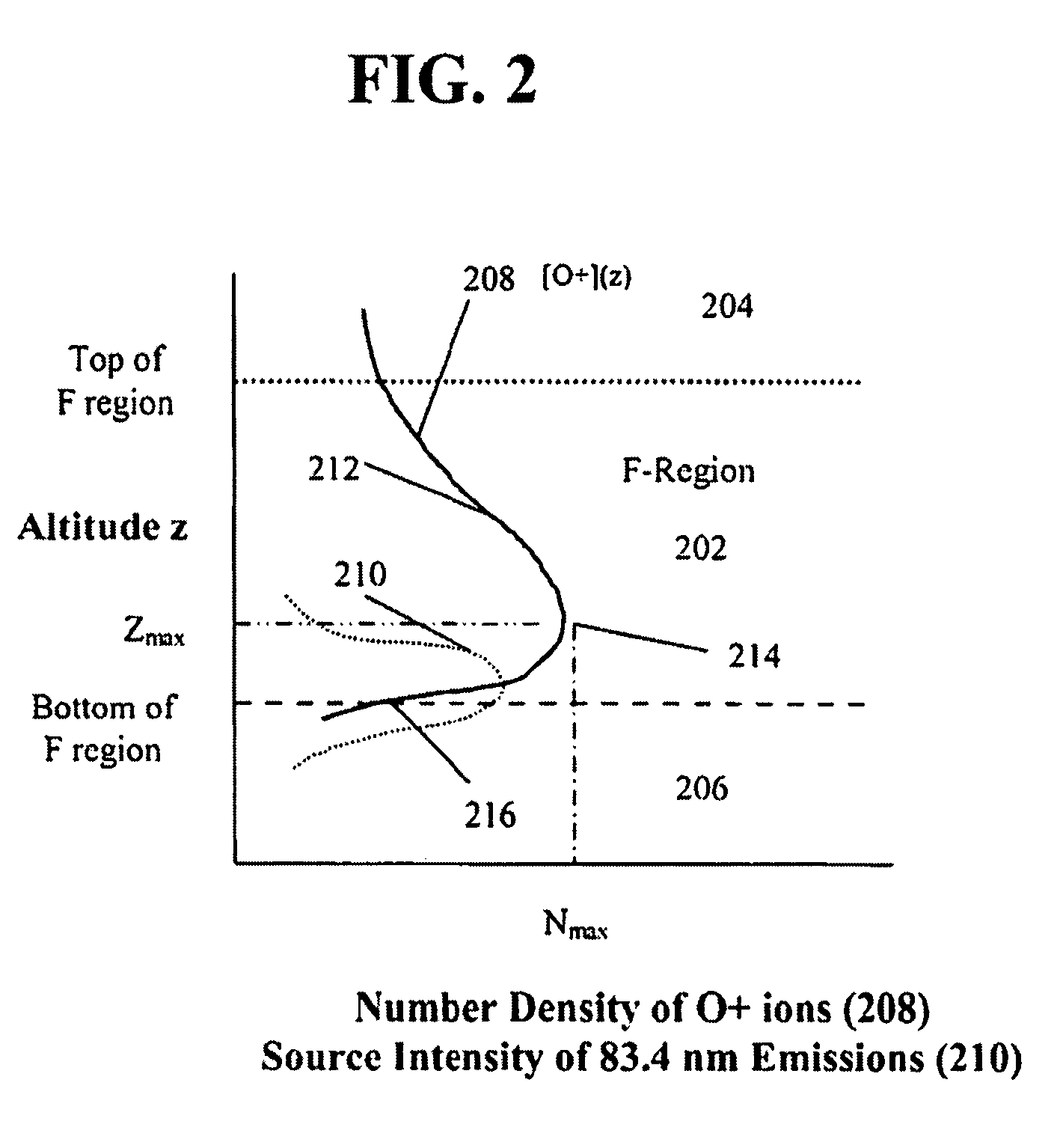System and method for retrieving ionospheric parameters from disk-viewing ultraviolet airglow data
a technology of ultraviolet airglow and ionospheric parameters, which is applied in the field of system and method for retrieving ionospheric parameters from disk-viewing ultraviolet airglow data, can solve the problems of increasing the optical path length, inability to interpret images, and insurmountable obstacles that are conventionally perceived, and achieve the effect of accurately determining the ionospheric altitude profile [o+](z)
- Summary
- Abstract
- Description
- Claims
- Application Information
AI Technical Summary
Benefits of technology
Problems solved by technology
Method used
Image
Examples
Embodiment Construction
[0024]One exemplary embodiment of the present invention applies when the line of sight from a satellite is nearly perpendicular to the surface of the Earth, i.e, the angle from the vertical is sufficiently small that the ionospheric parameters to be measured (including regional averages) do not vary appreciably over the latitudinal and longitudinal range subtended by the vertical integration path.
[0025]The present invention solves the problem facing conventional systems discussed above by applying discrete inverse theory (DIT) for underdetermined problems. The key element is the addition of external information, which is called “a priori information” in the mathematical formation of DIT or “background data” in meteorological forecasting. The source of the background data field is an ionospheric model or additional external data (such as from an ionosonde or incoherent scatter radar) that are spatially and temporally near-coincident with the disk observation. The system also makes us...
PUM
 Login to View More
Login to View More Abstract
Description
Claims
Application Information
 Login to View More
Login to View More - R&D
- Intellectual Property
- Life Sciences
- Materials
- Tech Scout
- Unparalleled Data Quality
- Higher Quality Content
- 60% Fewer Hallucinations
Browse by: Latest US Patents, China's latest patents, Technical Efficacy Thesaurus, Application Domain, Technology Topic, Popular Technical Reports.
© 2025 PatSnap. All rights reserved.Legal|Privacy policy|Modern Slavery Act Transparency Statement|Sitemap|About US| Contact US: help@patsnap.com



